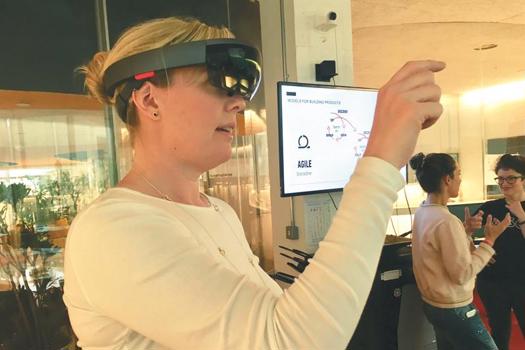Location: London, with offices in 29 countries
Employees: 1,100 staff and 13,000 volunteers
Case study focus: Micro-learning for humanitarian workers
The organisation
Save the Children was founded in 1919 by sisters Eglantyne Jebb and Dorothy Buxton. Its work helps an estimated 17.5 million children per year across 120 countries.
The challenge
Last year was the deadliest year on record since the migrant crisis began to sweep Europe. In 2016 alone more than 25,000 children made the perilous journey across the Mediterranean. UNICEF estimates that 90% of these children were unaccompanied. On the deadliest migrant route – Libya to Italy – there were 4,579 deaths last year. Of these, 700 were children.
Since the migrant crisis began in 2015 Save the Children has been at the forefront of the response. Róisín Cassidy, digital learning manager in Save the Children’s humanitarian capacity building team, says widespread media coverage of the crisis led to a substantial spike in volunteering.
But, adds Cassidy, many of these volunteers had little or no exposure to a crisis of this magnitude. “In northern France and Calais there were a lot of people going out on their weekends or setting up their own small NGOs,” she explains. “These were people that felt compelled to do something but had not previously worked in that context at all.”
The method
Save the Children considered face-to-face training but decided against it for logistical reasons; it was not practical to try to deliver training to thousands of people that weren't guaranteed to show up again. Cassidy said: “The challenge was to look at how we could still give [new volunteers] a foundation in humanitarian principles and essential codes of conduct and skills.”
In searching for the answer they turned to Skill Pill. The two organisations already had a relationship having first collaborated in 2011. On this occasion Save the Children needed Skill Pill to take the face-to-face learning and make it accessible on a mobile platform, so that volunteers and staff could access content on the go.
“It also needed to be bite-sized,” said Cassidy. “People are not going to sit down and do an hour-long training on in-depth topics when this isn’t necessarily their full-time job or even something they’ll continue to work in.”
Save the Children also enlisted the help of All in a Diary, a small NGO that specialises in providing guidance to the humanitarian sector. It came up with one-page scripts that formed the basis for the learning tools.
According to Cassidy the challenge for any organisation partnering with a NGO is understanding the demands of the sector. “[Skill Pill] has been sensitive to some of the changes that we’ve had to make to visuals or the script,” she says. “It also showed genuine interest for the topic and that’s key.”
The result
The finished product was a dashboard containing videos and resources on topics relevant to the child migrant crisis, including child safeguarding. Skill Pill also produced a ‘business card’ containing the log-in details for the dashboard. These were distributed to people on the ground.
Save the Children then reached out to other agencies, including The Humanitarian Leadership Academy and DisasterReady, so that as wide a pool of volunteers as possible could benefit. “They both host online learning courses and have a massive reach,” she said. “DisasterReady included [the dashboard] in its January newsletter and we saw a massive spike in access. We basically wanted to say ‘these tools are available to anyone that wants to use them in any way’.”
Save the Children reports that between 1 September 2016 and 20 February 2017 the learning platform was accessed 3,436 times. The videos have been well-received, particularly in ‘origin’ countries, Cassidy reports. After the UK the second highest number of views came from Kenya, followed by Turkey and Bangladesh.
Gerry Griffin, founder of Skill Pill, explained that in designing a learning tool for a volunteer workforce it’s important to adapt the tone of engagement. “When you shift from a workforce to a federation of volunteers the psychological contract changes. You cannot ‘push’, you have to ‘pull’. You need to appeal to ‘best self’ rather than rely on imperatives.”
He described mobile learning as a ‘pull’ technology that allows people to engage when and where they want rather than ‘pushing’ them into a certain learning structure. This technique can work well for a wide range of other types of workers, he said.
“Organisations with a distributed population, like a large sales force, could also really benefit from this style,” said Griffin, reporting that mobile learning has become popular with financial services organisations where employees can be reluctant to commit large chunks of time to face-to-face training. “It’s also a good way to get colleagues to take more responsibility for their learning pathways,” Griffin added.
As the child migrant crisis worsens Save the Children continues to look at how it can improve the support it offers to people on the frontline. The collaboration with Skill Pill has encouraged technical experts from other areas of Save the Children to approach the digital learning team about producing similar learning tools. “The success of this project has meant that we are now aware of needs that we previously weren’t and now we are better placed to help,” said Cassidy.









